#kalbajar
Photo
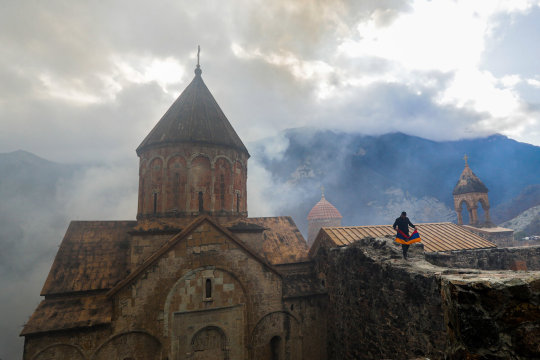
A man with an Armenian national flag visits the 12th-13th century Orthodox Dadivank Monastery on the outskirts of Kalbajar, in the separatist region of Nagorno-Karabakh, on Nov. 13, 2020. Under an agreement ending weeks of intense fighting over the Nagorno-Karabakh region, some Armenian-held territories, such as this area, will pass to Azerbaijan. (AP Photo/Sergei Grits)
0 notes
Photo

Bu gün Ağdamın erməni əsirliyindən azad olunmasından 2 il ötür. Şanlı Azərbaycan Ordusu Müzəffər Ali Baş Komandan cənab İlham Əliyevin rəhbərliyi ilə yeni tarix yazdı və gələcək nəsil qalib olaraq böyüyəcək. Lakin keçmişi də unutmaq olmaz! Çünki keçmişi unutsaq eyni faciələr yenidən başımıza gətirilə bilər. Təəssüf ki, hər bir dövrdə sərhədlərimizdə şərəfsiz, alçaq, terrorçu qonşularımız mövcud olacaq. Hər zaman hər şeyə hazır olmalıyıq! Qarakənd faciəsi və ya 20 noyabr faciəsi — 1991-ci il 20 noyabrda Xocavənd rayonunun Qarakənd kəndinin yaxınlığında, Ağdam rayonunun Mərzili kəndi ərazisində erməni hərbi dəstələri tərəfindən vurulan Azərbaycan hərbi helikopter hadisəsidir. Bu erməni terroru nəticəsində 22 nəfər həyatını itirmişdi. Azərbaycan Respublikasının Dövlət katibi Tofiq İsmayılov, baş prokuror İsmət Qayıbov, dövlət müşaviri, sabiq daxili işlər naziri Məhəmməd Əsədov, millət vəkilləri Vaqif Cəfərov və Vəli Məmmədov, baş nazirin müavini Zülfü Hacıyev, Prezident Aparatının şöbə müdiri və jurnalist Osman Mirzəyev, Qazaxıstan Respublikası Daxili İşlər nazirinin müavini Saylau Serikov, Azərbaycan Dövlət Televiziyasının jurnalisti Alı Mustafayev həlak olanlar arasında idi. Şəhidlərimizin ruhu qarşısında hamılıqla baş əyirik ! 🇦🇿 Qazilərimizə təcili şəfalar və can sağlığı diləyirik! 🇦🇿 Yaşasın Müzəffər Ali Baş Komandan ! 🇦🇿 Yaşasın Müzəffər Azərbaycan Ordusu! 🇦🇿 Yaşasın Müzəffər Azərbaycan xalqı! 🇦🇿 Qarabağ Azərbaycandır! 🇦🇿 #Azerbaijan #Azərbaycan #Azerbaycan #Karabakh #KarabakhWar #Şuşa #ShushaisAzerbaijan #Xankəndi #KhankendiisAzerbaijan #KarabakhisAzerbaijan #Khankendi #Shusha #Fuzuli #Jabrayil #Zangilan #Agdam #Lachin #Gubadly #Khojaly #Kalbajar #Khojavand #Garakand #Xojavand #Agdam #Marzili #StopArmenianAggression #StopTerror https://www.instagram.com/p/ClLCHffjOLH/?igshid=NGJjMDIxMWI=
#azerbaijan#azərbaycan#azerbaycan#karabakh#karabakhwar#şuşa#shushaisazerbaijan#xankəndi#khankendiisazerbaijan#karabakhisazerbaijan#khankendi#shusha#fuzuli#jabrayil#zangilan#agdam#lachin#gubadly#khojaly#kalbajar#khojavand#garakand#xojavand#marzili#stoparmenianaggression#stopterror
0 notes
Text
It means that that almost the entire population of the ethnic Armenian enclave has left since Azerbaijan seized the region last week.
Azerbaijan has said it wants to reintegrate the area and treat its residents as equals, but an Armenian spokesman said this was just a "lie".
Nagorno-Karabakh - recognised as part of Azerbaijan - had been run by ethnic Armenians for three decades.
The mountainous region in the South Caucasus has been supported by Armenia - but also by its ally, Russia.
At least 200 ethnic Armenians and dozens of Azerbaijani soldiers were killed as Azerbaijan's army swept in. As part of a ceasefire deal, separatists have agreed to surrender their weapons.
The leader of the self-declared Republic of Nagorno-Karabakh has said it will cease to exist in the new year.
Nazeli Baghdasaryan, a spokeswoman for Armenia's prime minister, said the number of refugees entering the country over the past week had reached 100,417, out of Nagorno-Karabakh's estimated population of 120,000.
The UN refugee agency (UNHCR) also stated that 100,000 people had fled, stating that many of those fleeing "are hungry, exhausted and need immediate assistance".
Artak Beglaryan, an Armenian former separatist official, said that "the last groups" of Nagorno-Karabakh residents were on their way to Armenia Saturday.
"At most a few hundred persons remain, most of whom are officials, emergency services employees, volunteers, some persons with special needs," he wrote on social media.
In the midst of hundreds of Armenians fleeing Nagorno-Karabakh, Azerbaijan's defence ministry said that an Armenian army sniper killed one if its servicemen in Kalbajar, and its forces were taking "retaliatory measures".
Armenia immediately denied the accusation.
Kalbajar is on the north-west of the region, on the border with Armenia. Azerbaijan forces reclaimed the area in November 2020.
In addition to those killed during the Azerbaijani military operation last week, at least 170 people were killed in a huge explosion at a fuel depot in Nagorno-Karabakh on Monday.
It is not yet clear what caused the explosion near the main city of Khankendi, known as Stepanakert by Armenians.
The UN says it is sending a mission to Nagorno-Karabakh this weekend to assess the humanitarian situation, after Azerbaijan said it would allow such a visit to take place.
Armenia's ambassador-at-large, Edmon Marukyan, criticised the timing of the visit but stressed that it was important that UN officials saw for themselves what ethnic Armenians had been subjected to.
"It's good they will be there and they will become witnesses that these people were ethnically cleansed from their ancestral homeland, from their homes where their parents, where their ancestors were living and these people were totally cleansed from this territory," he told the BBC.
But he dismissed Azerbaijan's assurances as "a lie".
"It's total propaganda, another Azerbaijani fake propaganda. Nobody's going to stay in Nagorno- Karabakh," he said.
25 notes
·
View notes
Text
These settlements are being rebuilt in Lachin and Kalbajar
– 2024-04-11 15:22:29
Agreements on the reconstruction project of 1 settlement (Gorchu) and 2 villages (Chaykend, Qamishli) were signed in Lachin and Kalbajar districts, which are included in the Eastern Zangezur economic district.… The post These settlements are being rebuilt in Lachin and Kalbajar – 2024-04-11 15:22:29 appeared first on Worldys News. These settlements are being rebuilt in […]These settlements are…

View On WordPress
0 notes
Text
Azerbaijani MoD: Combat duty is organized at a high level in Kalbajar region-VIDEO
http://dlvr.it/SqcGQQ
0 notes
Text
Positions of Azerbaijani military in Kalbajar come underneath hearth
BAKU, Azerbaijan, October 4. On the night time of
November 3-4, items of the Armenian Armed Forces periodically fired
on the positions of the Azerbaijani military positioned within the course
of the settlements of Ellis and Mollabayramli of the Kalbajar
area, from their positions positioned within the course of the
settlements of Azizli and Yukhari Shorja of the Kelbajar area.
Basarkechersky district, with using firearms of assorted
calibers, Pattern
reviews citing Azerbaijani Protection Minsitry.
The items of the Azerbaijani military deployed in these areas have
taken sufficient response measures.
Originally published at Irvine News HQ
0 notes
Text
The next mines discovered in Kalbajar and Dashkasan have been neutralized - PHOTO
The next mines discovered in Kalbajar and Dashkasan have been neutralized – PHOTO
The works carried out in the direction of detecting and neutralizing the mines buried during the large-scale provocation of the Armenian armed forces are being continued.
The Ministry of Defense released information about this.
Another 118 PMN-Э type anti-personnel mines and 4 TM-62M type anti-tank mines buried by Armenian sabotage groups in Kalbajar region, as well as 108 PMN-Э type…
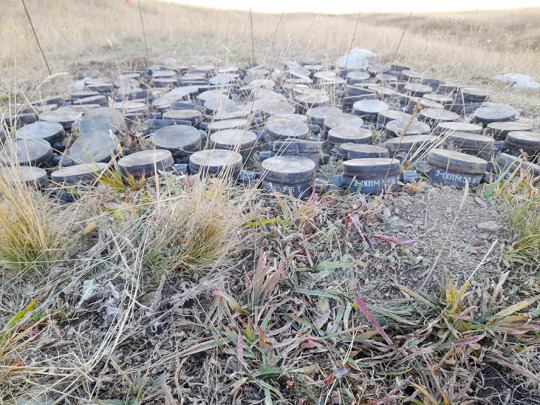
View On WordPress
0 notes
Text
FRESH CLASHES ERUPT BETWEEN AZERBAIJAN, ARMENIA
Clashes erupted between Azerbaijani and Armenian troops, with each side blaming the other for the outbreak in fighting, Russian news agencies reported early on Tuesday. The Azerbaijani defense ministry claimed that the Armenian military engaged in wide-scale provocations near the Dashkasan, Kalbajar and Lachin regions and the “sabotage groups of the Armenian military” had laid mines on land and…
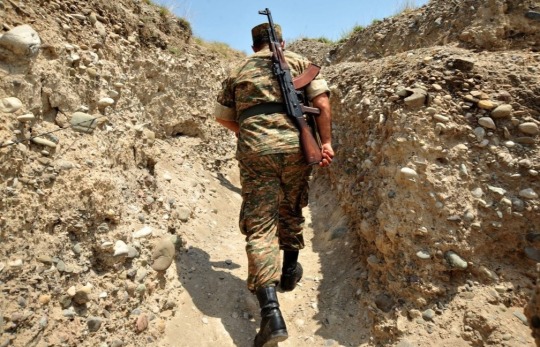
View On WordPress
0 notes
Photo
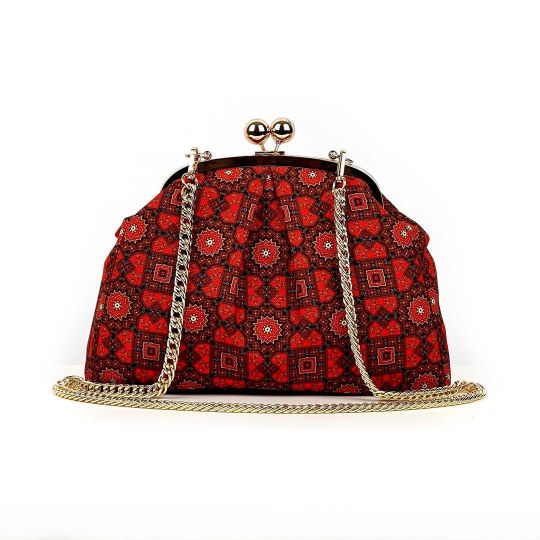
🏔Kalbajar⛲️ Handbag by Sacria Atelier “Zili” xalçası, onun əsasında yaranan “Kəlbəcər” çantasının Azərbaycanda eyniadlı rayonun ən maraqlı xalça nümunələrindən biridir. Onların ornamentlərinin xarakterik xüsusiyyəti iri elementlərin - böyük romb, cüt buynuz və müxtəlif şəkillərin təsviridir. Bu xalçalara xas olan emosional ifadə və naxışın plastikliyi Sacria Atelier stilizasiyası ilə tanınan çantaya köçürülüb. • • Ковер “Zili”, по мотивам которой была создана сумка “Kəlbəcər”, является одним из самых интересных образцов ковров одноименного региона Азербайджана. Характерной особенностью украшений их орнамента является изображение крупных элементов - большого ромба, пар рогов и различных изображений. Этим коврам характерна пластичность рисунка и эмоциональное выражение, которое передано и на узнаваемую по стилизации сумку от Sacria Atelier. • • The “Zili” carpet, on the basis of which the “Kəlbəcər” bag was created, is one of the most interesting samples of carpets of the region with the same name in Azerbaijan. A characteristic feature of the details of their ornament is the image of large elements - a large rhombus, pairs of horns and various images. These carpets are characterized by the plasticity of the pattern and the emotional expression, which is also transferred to the bag from Sacria Atelier, recognizable in stylization. • • • #SACRIAAtelier #luxurybag #bag #clutch #purse #sumka #çanta #stil #moda #baku #aztagram #сумкибаку #fashion #designerbags #gift #handbag #handmade #vintage #love #beautiful #sacriabags #shoulderbag (at Baku, Azerbaijan) https://www.instagram.com/p/ChaJmuNDZY_/?igshid=NGJjMDIxMWI=
#sacriaatelier#luxurybag#bag#clutch#purse#sumka#çanta#stil#moda#baku#aztagram#сумкибаку#fashion#designerbags#gift#handbag#handmade#vintage#love#beautiful#sacriabags#shoulderbag
1 note
·
View note
Text
#Iran's preparing for shit to kick off too#just like last time any spillover could be very dangerous#even more so this time with the Russia and China situations#Nagorno-Karabakh#Artsakh#Armenia#Azerbaijan
0 notes
Text
In June 2023, when the independent newsletter Kit first published this article, the president of Azerbaijan Ilham Aliyev and Armenia’s Prime Minister Nikol Pashinyan were in closer contact than ever before. They met in Brussels on May 14, in Moscow on May 25, in Chisinau on June 1, and then in Ankara two days later. But even this didn’t seem like enough, and further meetings were scheduled for the later part of summer and fall as the two sides verged, by all appearances, on imminent rapprochement. Yerevan declared it was ready to relinquish territorial claims outside of its internationally recognized borders, and this evidently applied to Nagorno-Karabakh, where the breakaway Republic of Artsakh had been proclaimed by the predominantly Armenian population. The backdrop to these events was the West’s paradoxical reluctance to side with the relatively more democratic Armenia in the conflict against authoritarian Azerbaijan.
This article was written by a Russian international affairs reporter, who chose to remain anonymous for safety reasons in the face of Russian state censorship. The author has long covered the conflict in Nagorno-Karabakh, traveling to Armenia, Azerbaijan, and Nagorno-Karabakh itself, and interviewing ordinary residents as well as officials and diplomats on both sides of the conflict.
How Nagorno-Karabakh came to be contested territory
Armenia and Azerbaijan’s modern-day borders first appeared on the global political map in the early 1920s, as the boundaries of Soviet Socialist Republics under the Soviet Union. Before the arrival of the Bolsheviks, these countries, as well as Georgia, had been at war in a power vacuum left in the wake of the Russian Empire’s demise. Each of those countries had its own interest in expanding its territory. In 1919–1920, for example, Armenia and Azerbaijan fought over Nagorno-Karabakh, a region predominantly populated by ethnic Armenians but surrounded by Azerbaijan’s lands.
Until the Russian Revolution of 1917, Karabakh’s largest city was Shusha (traditionally called Shushi by Armenians), a fortress perched atop of a mountain. Today’s capital of Nagorno-Karabakh, Stepanakert, was built under the Bolsheviks on the former site of the village of Khankendi, 15 kilometers (just under 10 miles) away from Shusha.
The ethnic makeup of local populations had some weight in defining the borders of Soviet republics, but it wasn’t the only factor in the decision-making. The Soviet Union’s planned economy and logistics also played a significant role. In terms of the latter, Nagorno-Karabakh was much better connected to Baku than to Yerevan, since Shusha and Stepanakert both had established eastward roads leading towards Azerbaijan’s territories along the coast of the Caspian Sea. Meanwhile, getting from Karabakh to Armenia involved crossing the mountains. For this reason, in 1936, the region was once again granted an autonomous status, but within Azerbaijan.
This designation could not have satisfied everyone. The region was not entirely Armenian: as of 1970, its population was comprised of both Armenians (80 percent) and ethnic Azeris (18 percent). Meanwhile, Karabakh’s historic capital, Shusha, was almost entirely Azeri-populated. Nagorno-Karabakh also didn’t share any segment of its border with Armenia, from which it was separated by the predominantly Azeri Kalbajar, Lachin, and Qubadli districts.
Karabakh Armenians wanted something greater than mere autonomy within Azerbaijan. In February 1988, the republic’s Council of People’s Deputies asked Moscow to transfer the region from Azerbaijan to Armenia. The Central Committee refused their request, while also describing it as a product of nationalist “provocations,” which duly provoked immediate resentment. Calls to break away from Azerbaijan multiplied in the predominantly Armenian Stepanakert. Protests also erupted across both Armenia and Azerbaijan, with people on both sides demanding opposite outcomes: while one side demanded the transfer of Karabakh, the other insisted it should be left as part of Azerbaijan.
Notably, though (and despite the occasional brawls, and even instances of rape, motivated by interethnic conflict) the main form the Nagorno-Karabakh conflict took at the time was political protests, not war.
Killing for Karabakh
“Since the school was segregated, children don’t talk to each other anymore. They enter the school by two separate entrances. They’re educated differently,” said an assistant principal from the Karabakh village of Tug on Soviet television in 1989, lamenting the breakdown of relations between Armenian and Azeri children in the village.
Before the start of the new school year, the parents had demanded that the school be segregated into two separate sectors. The corridor connecting those spaces was boarded up, so that neither the students nor the teachers from different sides would see each other while at school. Until this happened, there had been no ethnically-motivated conflicts between Armenian and Azeri children. But the political climate in Nagorno-Karabakh had grown extremely tense by the late 1980s.
It would be hard to pinpoint the event that marked a turning point towards war — especially since each side had its own sense of turning points. The British journalist Thomas de Waal, author of Black Garden, a book on the history of the Nagorno-Karabakh conflict, writes that the first people known to have died in the conflict were the two young Azeris killed in a clash with Armenians near the settlement of Askeran. Their deaths prompted the Azeris from the town of Aghdam to march on Stepanakert, intending to “sort out the separatists” there.
A few days later, violence broke out in the coastal city of Sumgait, Azerbaijan. According to the Soviet prosecutors’ figures, 26 Armenians died and another 100 were injured as mass beatings, ethnic pogroms, and killings rocked the city. Azerbaijan has a different version of the events in Sumgait. Senior officials and state-controlled media there claim that the Soviet KGB instigated the anti-Armenian pogroms.
The start of 1990 is known as “Black January” in Azerbaijan. The Soviet military violently suppressed protests in Baku, killing over 100 civilians in the process. The protesters were demanding that the local government resign, accusing officials of failing to protect the Azeris in Karabakh. They also called for Azerbaijan’s independence from the USSR.
After these events, Azerbaijan tried to expel the Karabakh Armenians from the disputed region. In the fall of 1991, it began a blockade of Stepanakert, accompanied by heavy shelling. To the Armenians, this was immediately reminiscent of the 1915 genocide of Armenians in the Ottoman Empire, whose survivors were still living in their midst. These associations reinforced the Karabakh Armenians’ conviction that war with Azerbaijan was inevitable and that the alternative to an Armenian Karabakh was their own exile or death.
In 1992, Yerevan resolved to protect Karabakh Armenians from shelling, using its military to create a 15–20 kilometer (9–12 mile) buffer zone around the region’s main inhabited areas. The width of that so-called “safety belt” was roughly the same as the striking range of the Soviet D-30 howitzers, the most common artillery weapons in both Armenia and Azerbaijan, since both countries had inherited them from the USSR. This signaled the start of the First Nagorno-Karabakh War.
Armenian soldiers entered Karabakh villages with megaphones blaring “Attention, attention” in the Azeri language. In many cases, they told Azeri locals to clear out of their homes within 10–12 hours. The world’s indifference to Azeri people who had to leave their place of birth for Azerbaijan, crossing the snow-covered Murovdag mountain range in search of new homes, is remembered with bitterness in Azerbaijan. Many of these refugees had to cross the mountains on foot. More than 700,000 refugees flooded the cities of Azerbaijan as ethnic Azeris fled not only from Karabakh, but also from Armenia, where their life had become unbearable.
Every Azeri also knows about the Khojaly massacre that took place in February 1992, on the fifth anniversary of the pogroms in Sumgait. The town of Khojaly — to this day the location of Nagorno-Karabakh’s only airport — was populated mostly by ethnic Azeris. When the Armenian army began a siege of the town, its residents started to leave, trying to make their way to the predominantly Azeri town of Aghdam. Around 500 of those civilians perished along the way. Some were shot by the Armenian forces; others froze in the woods before they could make it to safety.
Apart from the Kalbajar, Lachin, and Qubadli districts that lay between Nagorno-Karabakh and Armenia, the Armenian military also invaded the Aghdam, Fuzuli, Jabrayil, and Zangilan districts of Azerbaijan — all to ensure that no projectiles could reach Stepanakert. As a result, the Republic of Artsakh emerged in 1994 as Armenia’s creation, comprised of Nagorno-Karabakh and the territories Armenia occupied in an effort to insulate its capital.
The conflict was effectively frozen, but not resolved. None of the U.N. member countries — not even Armenia itself — would recognize Artsakh as an independent nation. At the same time, Yerevan continued to support the breakaway republic openly, even deploying its troops in the region. The Armenian side insisted that its actions were only ensuring the people’s right to self-determination and did not constitute occupation. From the perspective of international law, however, Yerevan was engaged precisely in armed occupation.
How Azerbaijan gained an advantage
After Artsakh was declared an independent republic, the contested territory’s population shrank from 190,000 during the Soviet period to no greater than 146,000. Meanwhile, the regions of Azerbaijan occupied by Armenia became deserted: their Azeri populations left them and Armenians were not eager to move in.
Baku has often accused Yerevan of ruining the territories it had invaded, but Armenia had never planned to develop them. Its original plan had been to use those districts when bargaining for a legal agreement with Azerbaijan that would solidify Nagorno-Karabakh’s independence from Baku. This was a solution proposed by Armenia’s first president, Levon Ter-Petrosyan, in 1997, when he called for compromise with Azerbaijan but got no support from his fellow Armenians.
In 1994, the Organization for Security and Co-operation in Europe (OSCE) organized, via its Minsk Group, talks for regulating the Karabakh question, with Russia, France, and the U.S. as key participants. But since neither the Armenian side nor Azerbaijan could agree to any compromise, those negotiations went nowhere.
Azerbaijani diplomats interviewed by this author admitted that these negotiations were undermined by the 2004 incident with Ramil Safarov, an Azerbaijani serviceman who murdered an Armenian officer while attending a NATO Partnership for Peace program in Budapest. Although a Hungarian court sentenced Safarov (who was born in Karabakh’s Jebrayil District) to life in prison, in 2012 he was extradited to Azerbaijan, where the authorities not only pardoned him, but also promoted him in rank.
The talks nevertheless dragged on right until 2016, when Azerbaijan tried regaining some of the Armenian-controlled territories by force. Over the four days of fighting in April 2016 (which historians now call the April War), the Azerbaijani military captured only a few elevated points in Karabakh’s Jebrayil district, but in the process made clear that it already had a serious military advantage.
Being an oil state, Azerbaijan had been in a position to increase military spending, and did so 10-fold between 2001 and 2015, when its defense expenditures reached $3 billion. By 2013, its military budget already equalled the entirety of Armenia’s state budget. That money was spent on vast quantities of weapons, including combat drones produced by Turkey and Israel. Still, at first, all this saber-rattling could have been written off as merely trying to strengthen Baku’s bargaining position.
How Baku ceased to believe in diplomacy
In 2018, Armenia’s Velvet Revolution brought the pro-Western politician Nikol Pashinyan into power. Pashinyan — a former staffer of Armenia’s first president Levon Ter-Petrosyan (who advocated compromise with Azerbaijan for the sake of peace) — was against rapprochement with Russia, being also wary of Yerevan’s history of unequal relations with Moscow and the latter’s one-way, top-down communication style. Pashinyan also opposed Armenia’s membership in the Eurasian Economic Union (EAEU).
Once in office, Pashinyan launched an anti-corruption campaign, insisting that Armenia’s main enemy wasn’t Azerbaijan but the corrupt elites inside the country. Russian propagandists were quick to label him “a Soros agent.” Indeed, Pashinyan’s administration, with its liberal and Western-educated members, some of whom “didn’t even speak good Russian,” perplexed Moscow.
Pashinyan’s contribution to the Karabakh question was to insist that, in addition to Yerevan, Baku, and the OSCE Minsk Group, the unrecognized Republic of Artsakh should also be permitted to take part in peace negotiations. This condition was a priori unacceptable to Baku.
Until then, Azerbaijan had gazed upon the new Armenian prime minister with a certain hopefulness, since he was the first Armenian leader who didn’t belong to the so-called “Karabakh clan” — a circle of politicians united by having been born on contested territory (like Pashinyan’s predecessors Serzh Sargsyan and Robert Kocharyan) and reviled by Baku as a “junta of war criminals” who stand in the way of peace. When Pashinyan himself began to criticize Kocharyan and Sargsyan, Azerbaijan took this to be a good sign.
For a while, Baku appears to have trusted Yerevan’s promises made behind closed doors. According to one Azerbaijani diplomat, “The Armenians kept saying, ‘Give us time to strengthen our governance, and then we’ll get serious about regulating [the conflict].’” Ilham Aliyev’s foreign policy advisor Hikmet Hajiyev described a similar dynamic in 2020, saying that the Armenian side “asked for time to familiarize themselves with the negotiating process,” but ultimately eroded the process of conflict resolution with “inconsistent statements.”
In spring 2019, the sides launched a program “for preparing their peoples for peace,” which ultimately came down to a symbolic exchange of journalists. In the background, Pashinyan understood that territorial concessions to Azerbaijan would destroy his approval ratings. Meanwhile, Baku wanted at least some of the occupied territories back. When, in 2019, Pashinyan said the reckless words “Artsakh is Armenia, full stop,” his statement brought the sides one step closer to escalation. Then there was another step: in spring 2020, the new president of the Republic of Artsakh, Arayik Harutyunyan, was inaugurated in the historically Azeri Shusha, instead of Stepanakert.
“Unless there’s progress in negotiations, combat operations can be expected already this summer,” an Azerbaijani politician told me in February 2020. In July, his words were confirmed by a shoot-out on the Armenia–Azerbaijan border. Both sides accused one another of “provocation,” though it isn’t clear who was to blame when an Azerbaijani patrol drove up too close to an Armenian checkpoint and the Armenian side took this as a threat. In the escalation that followed, Azerbaijan lost a general, Polad Hashimov. Then, protesters in Baku burst into the parliament building, demanding forceful measures. The crowds’ unprecedented rage made clear that the Karabakh question troubled them far more than corruption or the lack of civil liberties.
Why Russian peacekeepers didn’t bring peace to Karabakh
On September 27, 2020, it became clear that the “safety belt” Armenia had created around Nagorno-Karabakh against Soviet-era artillery could no longer protect the area. Azerbaijani drones and missiles were pummeling the region and its two historic capitals in Stepanakert and Shusha. At the same time, Azerbaijani infantry and tanks ruptured a defense line in the east of Nagorno-Karabakh, advancing deep into the contested territory. Hearing the news of the Azerbaijani army’s arrival, civilians were hastily evacuating from their homes. Within the first hours of the operation, Armenian villages nearest to the front line had been vacated.
Nikol Pashinyan was constantly on the phone those days, trying to reach Vladimir Putin in the hopes that Russia might intervene in the conflict. Although Pashinyan had learned to be more amenable to Putin over his two years in the prime minister’s seat, Putin wasn’t interested in falling out with Baku. Azerbaijan was a key partner to Russia’s oil-and-gas industry, as well as a country that gives Russia overland access to Iran. (When Russia invaded Ukraine in 2022, Azerbaijan remained an essential intermediary for exporting Russian fossil fuels and refining crude Russian oil for unsanctioned resale to other countries.)
Ilham Aliyev himself, truth be told, was far more congenial to Putin than the Armenian government at the time. The Russian president knew Aliyev’s father, Heydar Aliyev, who served in the Soviet KGB — a background that Putin shared and was therefore comfortable with.
In the end, Moscow invited the foreign ministers of the two countries for peace talks on October 9. But, although a cease-fire was reached, maintaining it proved impossible, and Armenian troops continued their retreat.
Armenia still had some hope in the Collective Security Treaty Organization (CSTO), a Eurasian military alliance that included the six post-Soviet countries with the closest ties to Moscow. In the event of aggression against one of its members, the CSTO could offer it military assistance, but on one significant condition: aggression had to be directed against the claimant country’s sovereign territory. Yet it was Armenia that was violating international law by deploying its troops in Karabakh, on Azerbaijan’s sovereign territory.
Things came to a head in the fall 2020. On November 7, the Azerbaijani army captured Shusha. Realizing that defeat was imminent, the Armenian side evacuated the Armenian population of Stepanakert, and two days later Armenia, Azerbaijan, and Russia was signed a treaty. This provisional document left plenty of room for free interpretations, while compelling the sides to cease fire and allowing Russia to send its peacekeeping troops into Karabakh. Armenia had to relinquish the Aghdam, Kalbajar, and Lachin districts in addition to those the Azerbaijani military had already captured. The treaty marked a defeat for Armenia, but the only alternative was a complete military defeat.
This was a painful loss for Armenians, and on the same night of November 10, an angry crowd burst into the government building in Yerevan. Instead of Pashinyan himself, the enraged protesters only found his wristwatch and cologne. For the next six months, Armenians protested, but the following June Pashinyan once again won the election, which proved that the voters had swallowed the treaty after all, rather than perpetuate a losing war.
As a result, the self-proclaimed Republic of Artsakh continued to exist, now under the protection of Russian peacekeepers. Tensions grew. Aliyev criticized the arrangement with Russia, cautiously at first, but later bringing compulsory language into Baku’s policy documents, to the effect that Karabakh was a “zone of temporary deployment of Russia’s peacekeeping forces” — lest anyone forgot that Russia was supposed to withdraw its peacekeepers after five years.
How the Russo-Ukrainian War brought the West to Aliyev’s side
The years of struggle over Karabakh turned the Azerbaijani government into a staunch adherent of the sovereignty principle, which balances the principle of self-determination in international law. Baku has consistently emphasized that Abkhazia and South Ossetia are Georgian lands, and that Crimea is part of Ukraine. And yet, it was Ilham Aliyev who was first to speak to Vladimir Putin after the Russian president recognized the independence of the Donetsk and Luhansk “republics” (the self-proclaimed “DNR” and “LNR”). Their conversation took place on February 22, 2022 — the day after the fateful meeting of Russia’s Security Council that sanctioned the invasion of Ukraine.
Although Russia’s relations with the West had been worsening since 2014, and practically broke down after February 2022, the international community would be hard-pressed to do anything about the Karabakh question without Russia, whose peacekeepers happen to be the ones on the ground in the area.
Nevertheless, it may very well be the West that gets to preside over the signing of the next Karabakh peace treaty. Judging by the number of meetings held by Armenian and Azerbaijani officials in Russia and abroad (in Washington, Brussels, and Prague), Moscow can hardly be said to have an advantage. To dispose with the Russian peacekeepers deployed in Nagorno-Karabakh, which will become possible by the end of 2024, Baku need only give Moscow a six-month notice. The West is hopeful about settling the question decisively right then, and so is Baku. Moscow, on the other hand, is toying with Armenia’s hopes by trying to defer the question of withdrawing its peacekeepers (together with its influence in the region).
But there’s the rub: while Azerbaijan has free choice of international intermediaries, Armenia does not. And now that Azerbaijan is turning towards Washington and Brussels (who have their own interest in getting Russian peacekeepers out of yet another post-Soviet territory), Yerevan’s prevarications are liable to trigger escalations, like the one that took place in September 2022.
With Russia embroiled in a war with Ukraine, Azerbaijan’s Southern Gas Corridor has become more important to the E.U. and its energy security. Russia’s rapprochement with Azerbaijan is also undesirable to NATO countries. These considerations have trumped the concerns over Azerbaijan’s human rights record — leading the Belarusian Nobel Prize laureate Ales Bialiatski to coin the term “Azerbaijanization” to describe the NATO countries’ tendency to avert their eyes from systemic violations of human rights when it suits their interests.
0 notes
Photo

27 Sentyabr - #AnımGünü #Qarabağ (#Karabakh, #Artsakh) torpaqlarını azad edərkən şəhid olan oğullar qarşısında baş əyirik. Ruhunuz sağ olsun, #Shusha, #Lachin, #Kalbajar, #Zangilan, #Lachin, #Fuzuli, #Gubadli, #Aghdam azaddır! #FreeKhankendi #FreeKarabakh #FreeKhojali #FreeAghdere #FreeKhojavend #FreeArtsakh #Azerbaijan #Azerbaycan #LongLiveAzerbaijaniArmy #Azerbaijani #AzerbaijaniArmy (at WEB Dizayn Studiya) https://www.instagram.com/p/CUUNBa4Kqp4/?utm_medium=tumblr
#anımgünü#qarabağ#karabakh#artsakh#shusha#lachin#kalbajar#zangilan#fuzuli#gubadli#aghdam#freekhankendi#freekarabakh#freekhojali#freeaghdere#freekhojavend#freeartsakh#azerbaijan#azerbaycan#longliveazerbaijaniarmy#azerbaijani#azerbaijaniarmy
1 note
·
View note
Photo
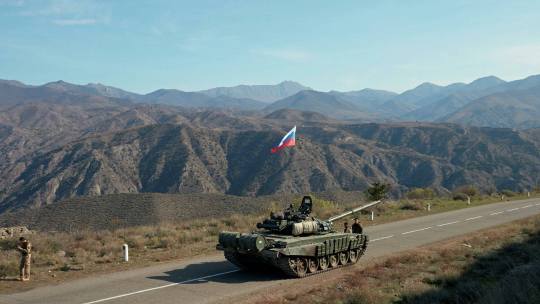
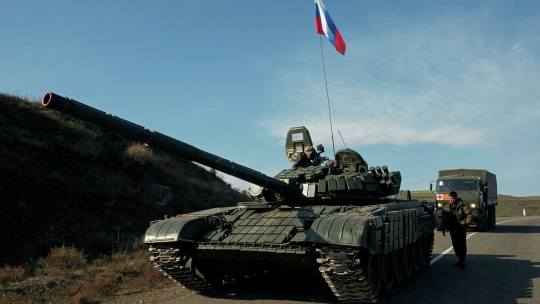


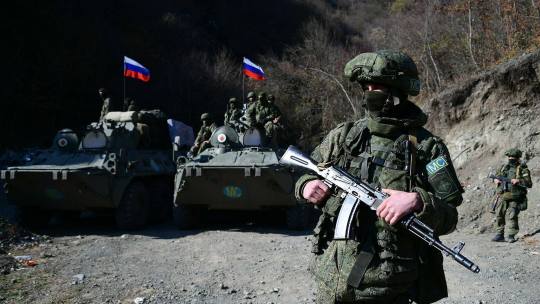
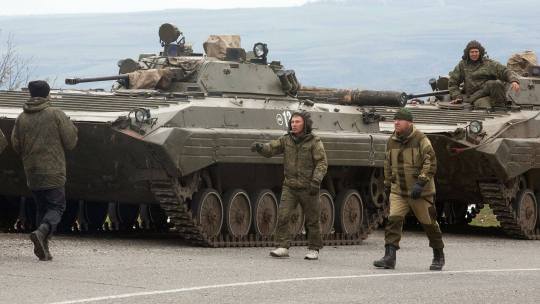

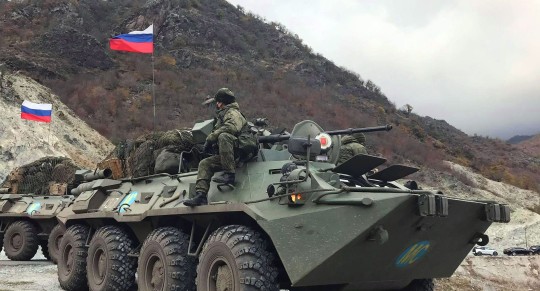
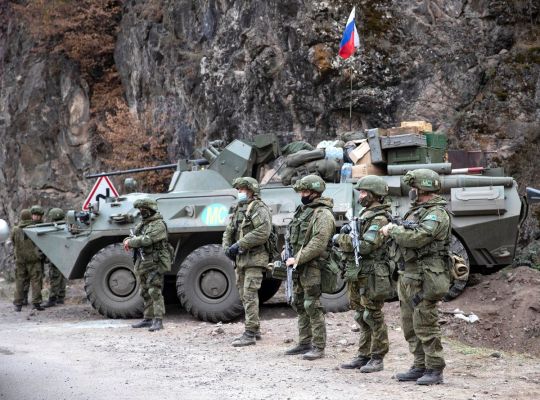
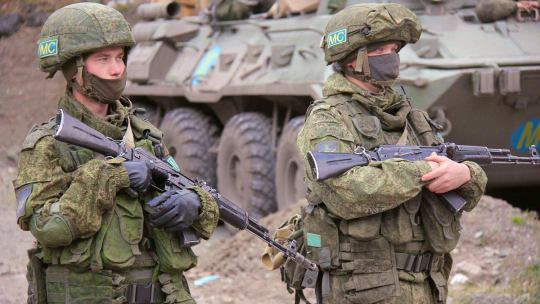
Russians in Armenia
NAGORNO-KARABAKH - NOVEMBER 14, 2020: Russian peacekeepers guard the area near the Dadivank Armenian monastery. On 10 November, Armenia’s Prime Minister Nikol Pashinyan, Russia’s President Vladimir Putin, and Azerbaijan’s President Ilham Aliyev signed a joint statement on a complete ceasefire in Nagorno-Karabakh. The Russian leader said the Azerbaijani and Armenian sides would maintain the positions that they had held and Russian peacekeepers would be deployed to the region. According to the document, Armenia has to hand over the Nagorno-Karabakh districts of Kalbajar, Lachin, and Agdam, to Azerbaijan till November 15, December 1, and November 20, respectively. Stanislav Krasilnikov/TASS. [Source]
#russia#armenia#peacekeepers#azerbaijan#conflict#war#T-72#BTR#kalashnikov#AK-74M#AK-74#AK74#intervention#nagorno-karabakh#kalbajar#lachin#agdam
16 notes
·
View notes
Text
Jomard village of Kalbajar district
http://dlvr.it/SkzRzz
0 notes
Text
Azerbaijans liberated lands have nice potential for growth of agriculture minister
BAKU, Azerbaijan, November 3. The territories
of Azerbaijan liberated from the occupation have a terrific potential
for the event of agriculture, Minister of Agriculture of
Azerbaijan Inam Karimov mentioned, Development experiences on November 3.
He made the comment throughout an occasion devoted to the second
anniversary of Azerbaijan’s victory in second Karabakh struggle underneath
the management of Supreme Commander-In-Chief President Ilham
Aliyev.
Based on Karimov, the manufacturing of grain, feed crops and
the livestock business on the liberated territories will likely be
prioritized.
“Along with these industries, that are thought of
conventional for the area, there may be additionally nice potential for the
growth of vegetable rising. As a brand new route of the
growth of agriculture within the liberated territories, prospects
for the event of intensive gardening are opening up,” he
mentioned.
“There are favorable alternatives for the event of cotton
rising in Aghdam, Fuzuli, Jabrayil districts, vegetable rising in
Aghdam and Fuzuli districts, viticulture and winemaking primarily based on
nationwide grape varieties – in Aghdam, Fuzuli, Jabrayil and Zangilan
districts,” Karimov added.
He additionally mentioned that the pastures of Kalbajar and Lachin districts
have essential significance within the growth of livestock and
beekeeping.
“The event of livestock in these areas will likely be ensured
on the bottom of intensive and semi-intensive fashions of agriculture.
I additionally wish to word that the creation of latest logistics
infrastructure is likely one of the major priorities, and the growth of
the logistics alternatives will create potentialities for the
export of agricultural merchandise on exterior markets. All this
signifies that efficient use of agricultural potential of the
liberated territories will enable to considerably improve the
manufacturing of agricultural merchandise within the nation,” Karimov
mentioned.
Originally published at Irvine News HQ
0 notes
